
Some very old stone work around the side of the Pantheon, where the portico attaches to the round temple. Probably, the whole temple was once covered in marble (like this) or bronze, as this was a common practice in Hadrian's time.

Some very old stone work around the side of the Pantheon, where the portico attaches to the round temple. Probably, the whole temple was once covered in marble (like this) or bronze, as this was a common practice in Hadrian's time.

Another empty recess. But the point of this picture is to take a good look at the columns on either side, as well as a look at the brick - see the holes? This area was once faced with something else, too. One also wonders where the little window goes?
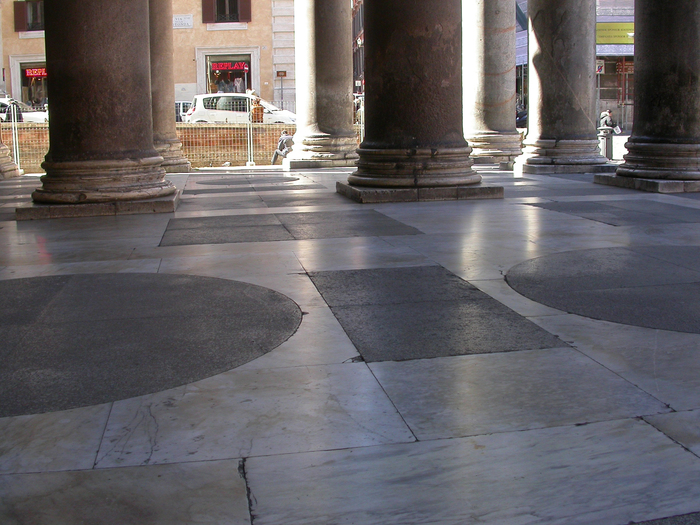
Many buildings in ancient Rome had a portico, an open area with the roof held by columns. This particular portico is supported by enormous red granite columns. In fact, the columns are a bit larger than strictly necessary, because the builders ran out of stone and thus had to make the building smaller than originally planned. Notice the guy sitting on the edge of one of the columns on the far side of the portico.
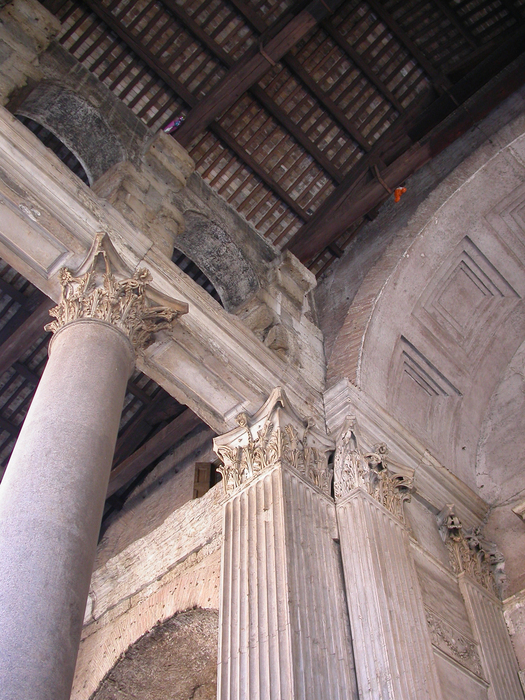
The roof of the portico, something which you would not have seen in Hadrian's time. The stone arches and woodwork would be covered by bronze. It wasn't fashionable to show the structures which supported the building in that time. The bronze remained on the portico until 1644, when the Pope Urban VIII ordered them melted down in order to make cannons. This act led to the saying, Quod non fecerunt barbari, fecerunt Barberini (
On the bright side, you can see the architecture of the portico.
What the barbarians did not do, the Barberinis [Urban VIII's family name] did
).
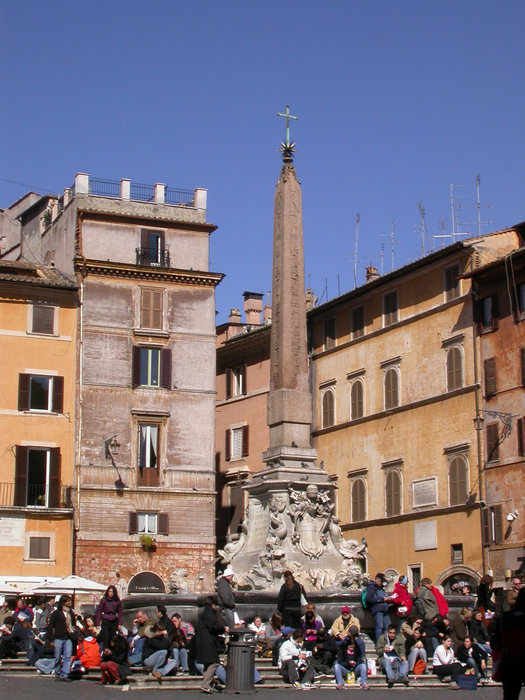
One thing I learned in my visit to Rome was that contact between the Romans and the Egyptians did not start nor end with Cleopatra. The two civilizations have been in contact - be it trade or wars - throughout their history. During much of that history Egypt was the far more advanced civilzation, but that didn't keep the Romans from coming over and taking their stuff from time to time. This obelisk was originally erected by King Ramsses II, Ramses the Great,
sometime around 1250 BC. It originally stood in Heliopolis, but was brought to Rome in about 40 AD and erected in front of a temple to Isis. The history gets a bit fuzzy after that, but it is known that in the 14th century the obelisk was standing at the east of Santa Maria in Aracoeli on the Capitoline hill.
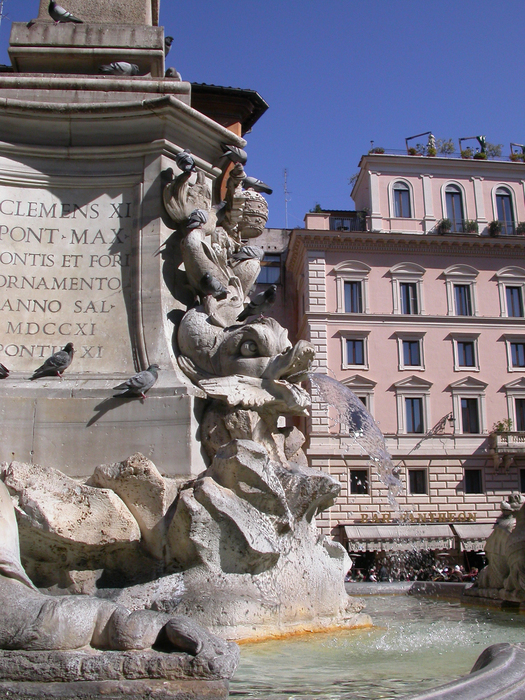
In 1711 a fountain was built outside the Pantheon and crowned with the obelisk (which was, of course, also crowned with a cross - a suprisingly enlightened answer by the Catholic church to many of the ancient pagan landmarks of Rome.)
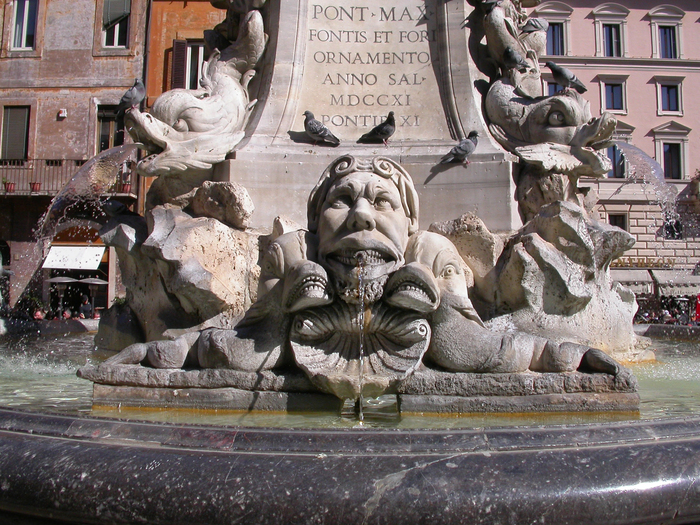
They're supposed to be dolphins. And, presumably, a guy. I liked the way the water looks in this photo, though.